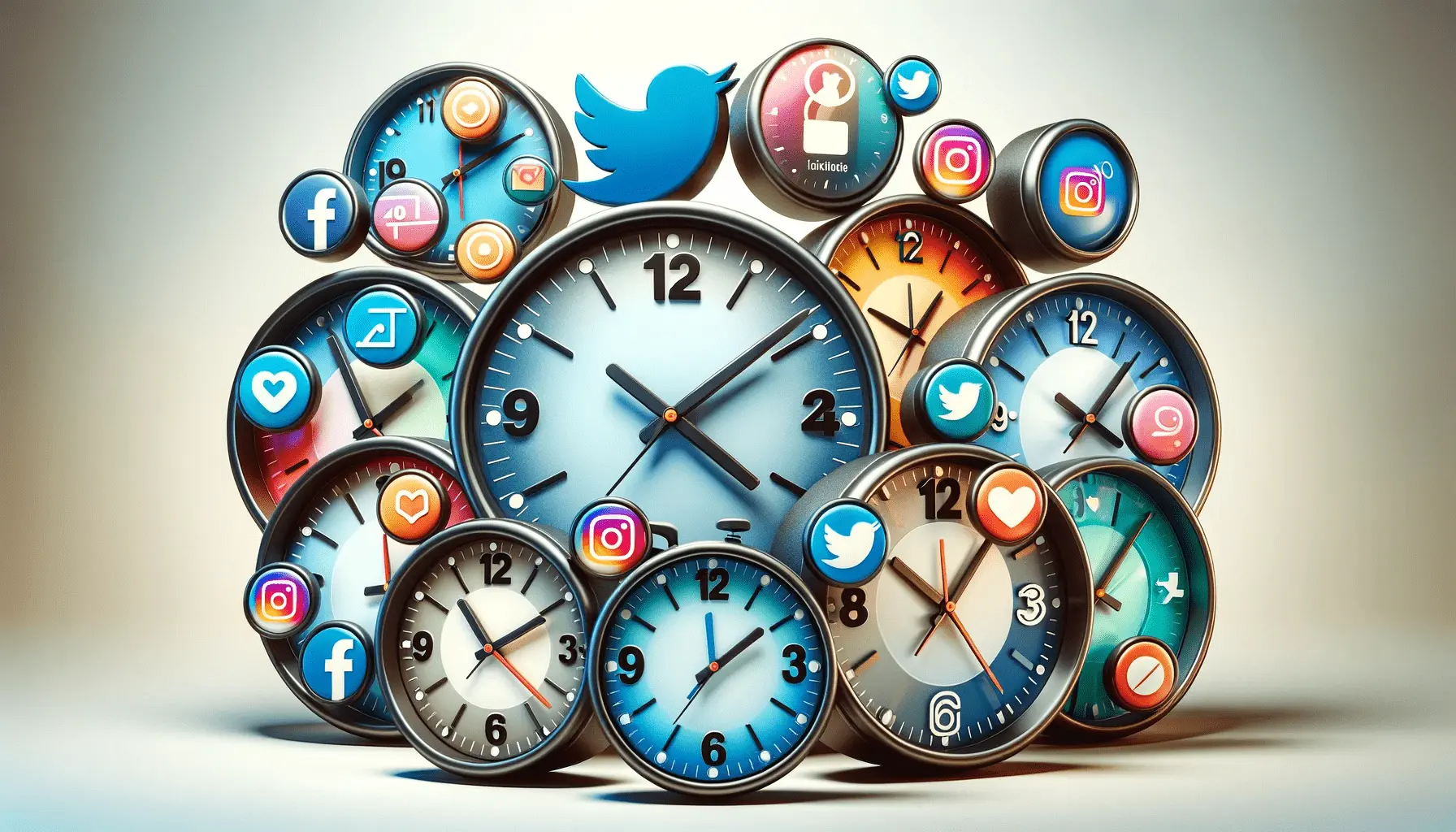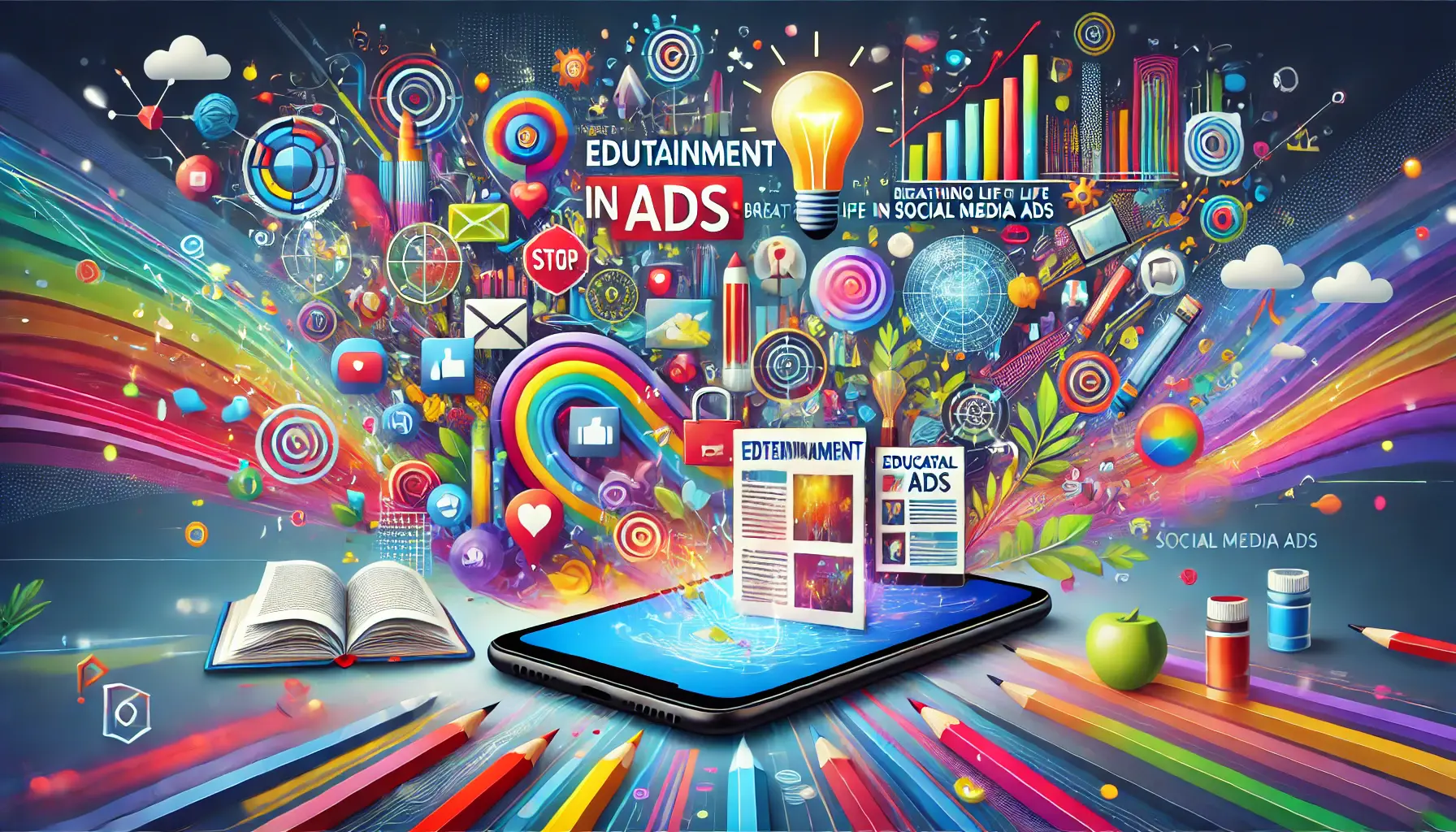Understanding the intricacies of ad timing in social media advertising is crucial in today’s digital landscape.
The effectiveness of an ad campaign on social media platforms hinges significantly on when the ads are displayed to the target audience.
This article delves into the strategic timing of social media ads, exploring various aspects that influence the success of these advertisements.
Ad timing is not just about choosing the right moment; it’s a multifaceted approach that involves understanding audience behavior, platform algorithms, and the dynamic nature of social media itself.
By mastering these elements, marketers can significantly enhance the impact of their advertising efforts on platforms like Facebook, Instagram, Twitter, and LinkedIn.
- Understanding Audience Behavior and Timing
- Optimizing for Platform Algorithms
- Strategic Scheduling for Different Platforms
- Impact of Ad Frequency and Repetition
- Leveraging Seasonality in Ad Timing
- Integrating Ad Timing with Content Strategy
- Measuring and Adjusting Ad Timing for Optimal Results
- Maximizing Social Media Ad Success Through Strategic Timing
- Ad Timing in Social Media Ads: Essential FAQs
Understanding Audience Behavior and Timing
One of the first steps in mastering ad timing is understanding when your target audience is most active on social media.
Different demographics have varying peak hours of activity.
For instance, working professionals might be more active during early mornings or late evenings, while younger audiences could show higher engagement during afternoons and late nights.
Utilizing analytics tools provided by social media platforms can offer valuable insights into when your audience is online.
This data-driven approach ensures that your ads are served at times when they are most likely to be seen and engaged with, thereby increasing the chances of conversion.
Seasonal and Event-Based Timing
Another aspect of audience behavior is their responsiveness during specific seasons or events.
For example, ads related to holiday shopping are more effective when timed around festive seasons.
Similarly, ads for sports merchandise can be strategically timed around major sporting events.
Understanding these patterns allows for the creation of timely and relevant ad content that resonates with the audience’s current interests.
Marketers should also consider the impact of global events, such as major news stories or cultural phenomena, which can shift audience attention and engagement patterns.
Being adaptable and responsive to these changes is key to effective ad timing.
Key Point: Aligning ad timing with audience online hours and seasonal events enhances ad relevance and engagement.
Optimizing for Platform Algorithms
The algorithms of social media platforms play a pivotal role in determining the visibility and success of ads.
These algorithms are often designed to prioritize content based on relevance, engagement, and timeliness.
Understanding and leveraging these algorithmic preferences is essential for effective ad timing.
Each social media platform has its unique algorithm, which can influence the best times to post ads.
For instance, platforms like Instagram and Facebook may give preference to content that garners immediate engagement, suggesting the importance of timing ads when the audience is most responsive.
- Relevance to User Interests: Ads that align with the user’s interests and online behavior tend to perform better. This means timing ads when users are most likely to engage with content similar to yours.
- Engagement Metrics: Ads that receive quick interactions (likes, comments, shares) may be favored by algorithms, making it crucial to time ads when your audience is most active.
- Content Freshness: Some platforms prioritize newer content, so timing ads to coincide with these freshness windows can increase visibility.
By aligning ad schedules with these algorithmic factors, marketers can enhance the reach and effectiveness of their social media ads.
Note: Tailoring ad timing to platform algorithms can significantly boost ad performance and audience engagement.
Strategic Scheduling for Different Platforms
Each social media platform has its unique environment and user behavior, making it essential to tailor ad timing strategies accordingly.
A one-size-fits-all approach does not work when dealing with diverse platforms such as Facebook, Instagram, Twitter, and LinkedIn.
Facebook Ad Timing
Facebook’s vast user base and sophisticated algorithm make it a prime platform for targeted ads.
The best times for ad placement often coincide with evenings and weekends when users are more likely to browse leisurely.
However, this can vary based on the target demographic and their online habits.
Instagram Ad Timing
Instagram, with its visually driven content, sees high engagement outside of regular work hours.
Late afternoons and night hours are typically effective for ad placements, especially for brands targeting a younger audience that tends to scroll through Instagram during these times.
Twitter Ad Timing
Twitter’s real-time nature makes it ideal for timely and event-based ads.
Morning hours often see higher engagement as users catch up on news and updates.
For live events or trending topics, aligning ads with these moments can yield significant engagement.
LinkedIn Ad Timing
LinkedIn, being a professional network, has a different user engagement pattern.
Weekdays, particularly mid-week during business hours, are optimal for B2B advertising, as users are more likely to engage with professional content during this time.
Understanding these nuances and scheduling ads accordingly can significantly improve the performance and ROI of social media ad campaigns.
Idea: Customizing ad schedules for each social media platform enhances the effectiveness of ad campaigns.
Impact of Ad Frequency and Repetition
Ad frequency and repetition are critical factors in ad timing strategy.
Striking the right balance between being memorable and avoiding ad fatigue is essential for maintaining audience engagement and interest.
Understanding Ad Frequency
Ad frequency refers to how often an audience sees your ad.
While repeated exposure is necessary for brand recall, too much frequency can lead to ad fatigue, where the audience becomes desensitized to the ad.
This can negatively impact the campaign’s effectiveness.
- Optimal Frequency: Finding the optimal frequency depends on the campaign goals, ad content, and audience. A balance should be struck where the ad remains effective without overwhelming the audience.
- Target Audience Response: Monitoring how the target audience responds to different frequencies can provide insights into the ideal repetition rate.
Combating Ad Fatigue
Ad fatigue occurs when the audience gets tired of seeing the same ad repeatedly.
This can lead to decreased engagement and even negative sentiment towards the brand.
- Varying Ad Creatives: Regularly updating ad creatives can keep the content fresh and engaging, reducing the risk of ad fatigue.
- Segmenting Audiences: Rotating ads among different audience segments can prevent overexposure to any single group.
- Timing Adjustments: Adjusting the timing of ad campaigns, such as using different times or days for the same ad, can help maintain audience interest.
By carefully managing ad frequency and combating ad fatigue, advertisers can maintain a healthy level of audience engagement and interest in their campaigns.
Featured Info: Balancing ad frequency and variety is key to avoiding ad fatigue and maintaining campaign effectiveness.
Leveraging Seasonality in Ad Timing
Seasonality plays a significant role in ad timing strategies.
Aligning ad campaigns with seasonal trends, holidays, and events can greatly enhance their relevance and effectiveness.
Understanding Seasonal Trends
Consumer behavior often changes with seasons, influenced by factors like weather, holidays, and cultural events.
Recognizing these patterns allows for the creation of timely and resonant ad campaigns.
- Season-Specific Products: Promoting products or services that align with the season (e.g., swimwear in summer, heaters in winter) can boost relevance and engagement.
- Cultural and Holiday Events: Tailoring ads around holidays and events (like Christmas, Black Friday, or Valentine’s Day) can capitalize on increased consumer spending during these periods.
Timing Campaigns Around Events
Events, whether global, regional, or local, offer opportunities to create highly targeted and timely ads.
For instance, advertising sports gear during a major sports event can attract a highly engaged audience.
- Event-Driven Promotions: Offering special promotions or discounts aligned with events can drive urgency and conversions.
- Pre-Event Buildup: Starting campaigns before the event can help build anticipation and capture audience interest early.
Adapting to Unpredictable Events
Unpredictable events like a sudden change in weather or a viral social trend can also influence consumer behavior.
Agile ad timing strategies that can quickly adapt to these changes can capture unexpected opportunities.
- Real-Time Marketing: Adjusting ad campaigns in real-time to align with sudden events or trends can make ads more relevant and engaging.
- Monitoring Social Signals: Keeping an eye on social media trends and conversations can provide insights for timely ad adjustments.
By leveraging seasonality and event-based trends, advertisers can create more impactful and relevant ad campaigns that resonate with the audience’s current interests and needs.
Truth: Seasonal and event-based ad timing strategies can significantly enhance ad relevance and audience engagement.
Integrating Ad Timing with Content Strategy
Integrating ad timing with an overall content strategy is crucial for creating a cohesive and effective marketing approach.
This integration ensures that ads complement and reinforce the broader narrative and goals of the brand’s content.
Aligning Ads with Content Themes
Ads should be seen as an extension of the brand’s content strategy.
This means aligning ad messages with ongoing content themes, narratives, or campaigns.
For example, if a brand is focusing on sustainability in its content, its ads should also reflect this theme to maintain consistency and reinforce the message.
- Consistent Messaging: Ensuring that the tone, style, and message of ads are in harmony with overall content.
- Thematic Campaigns: Aligning ad campaigns with broader content themes for a unified marketing approach.
Timing Ads with Content Releases
Coordinating ad timing with content releases, such as blog posts, videos, or product launches, can amplify the impact of both the ads and the content.
This synchronization can create a more compelling narrative and drive engagement across different channels.
- Launch Campaigns: Timing ads to coincide with product launches or major content releases to maximize exposure and interest.
- Cross-Promotion: Using ads to drive traffic to content and vice versa, creating a synergistic effect between the two.
Responsive Ad Strategies
Ad strategies should also be responsive to the performance and engagement levels of the content.
Analyzing how audiences interact with content can provide insights into the most effective times and ways to present ads.
- Engagement Analysis: Using content engagement data to inform ad timing and targeting decisions.
- Adaptability: Being flexible in ad strategy to respond to content performance, such as increasing ad frequency for high-performing content.
By integrating ad timing with the overall content strategy, brands can create a more seamless and effective marketing experience that resonates with their audience.
Note: Harmonizing ad timing with content strategy enhances the overall impact and coherence of marketing efforts.
Measuring and Adjusting Ad Timing for Optimal Results
Measuring the effectiveness of ad timing strategies is essential for optimizing ad performance.
Continuous monitoring and adjustments based on data and analytics can significantly enhance the ROI of social media ad campaigns.
Key Metrics for Measuring Ad Performance
Several metrics are crucial for assessing the success of ad timing strategies.
These include engagement rates, click-through rates (CTR), conversion rates, and return on ad spend (ROAS).
Tracking these metrics over time helps in understanding how different timing strategies impact ad performance.
- Engagement Rates: Measures how audiences interact with the ads (likes, comments, shares).
- Click-Through Rates: Indicates the percentage of viewers who clicked on the ad to learn more or make a purchase.
- Conversion Rates: Reflects the effectiveness of ads in converting viewers into customers.
- Return on Ad Spend: Evaluates the financial return generated from the ad campaign.
Utilizing A/B Testing
A/B testing is a powerful tool for optimizing ad timing.
By running two variations of the same ad at different times or days, marketers can gather data on which timing yields better results.
This empirical approach allows for data-driven decisions in ad scheduling.
- Controlled Experiments: Running controlled experiments with different ad timings to evaluate performance.
- Data-Driven Insights: Using the results from A/B testing to inform future ad timing strategies.
Adapting to Audience Feedback and Trends
Ad timing strategies should not be static.
They need to evolve based on audience feedback, changing trends, and market dynamics.
Regularly reviewing and adjusting ad timing based on these factors ensures that the strategy remains effective and relevant.
- Market Trends: Keeping abreast of market trends and adjusting ad timing accordingly.
- Audience Feedback: Listening to audience feedback on ads and using this information to refine ad timing.
By continuously measuring, testing, and adjusting ad timing strategies, marketers can ensure that their social media ads are as effective as possible, leading to better engagement, higher conversions, and increased ROI.
Key Point: Regular measurement and adjustment of ad timing are essential for optimizing the effectiveness of social media ads.
Maximizing Social Media Ad Success Through Strategic Timing
In the dynamic world of social media advertising, understanding and implementing effective ad timing strategies is paramount.
The journey through various facets of ad timing reveals its complexity and the necessity for a nuanced approach.
From aligning with audience behavior to adapting to platform algorithms, the key lies in a meticulous, data-driven strategy.
Key Takeaways in Ad Timing
Ad timing is not a one-off task but a continuous process of learning, adapting, and optimizing.
The insights gained from this exploration underscore the importance of several critical aspects:
- Understanding and aligning with audience behavior and preferences.
- Customizing strategies for different social media platforms.
- Balancing ad frequency and repetition to avoid ad fatigue.
- Leveraging seasonality and events for timely and relevant ad placement.
- Integrating ad timing with the overall content strategy for cohesive messaging.
- Employing continuous measurement and adjustment for optimal ad performance.
Final Thoughts on Ad Timing in Social Media Ads
As we conclude, it’s evident that mastering ad timing in social media ads is a blend of art and science.
It requires a deep understanding of both the audience and the platforms, coupled with a willingness to adapt and evolve strategies based on real-time data and trends.
The ultimate goal is to create ads that not only reach the audience at the right time but also resonate and drive meaningful engagement.
For businesses and marketers, the journey towards effective ad timing is ongoing.
It demands attention to detail, creativity, and a commitment to understanding the ever-changing social media landscape.
By embracing these principles, advertisers can ensure that their social media ads are not just seen but are impactful, driving both brand awareness and business growth.
Enjoyed the article? Let its author handle your social media ads. Visit our service page to get started!
Ad Timing in Social Media Ads: Essential FAQs
Delving into the nuances of ad timing in social media advertising, we encounter a range of questions that are frequently asked by marketers and businesses alike. Here are some of the most pertinent FAQs, each providing a concise yet insightful answer.
The optimal time varies by platform and audience. Generally, evenings and weekends work well for Facebook, while late afternoons and nights are effective for Instagram.
Ad frequency should balance memorability with avoiding ad fatigue. It depends on campaign goals, audience response, and the type of content being advertised.
Yes, each platform has unique user behaviors. For example, LinkedIn ads perform best during weekdays, while Twitter ads are effective during morning hours.
Absolutely. Aligning ads with seasonal trends and events can significantly enhance their relevance and effectiveness, especially during holidays and cultural events.
Key metrics include engagement rates, click-through rates, conversion rates, and return on ad spend. Regular analysis of these metrics is essential.
Yes, A/B testing with different ad timings can provide valuable insights, helping to determine the most effective times for ad placements.
Vary ad creatives regularly and segment your audience to prevent overexposure. Adjusting the timing and frequency of ads also helps.
Yes, integrating ad timing with your content strategy ensures cohesive messaging and can amplify the impact of both ads and content.










